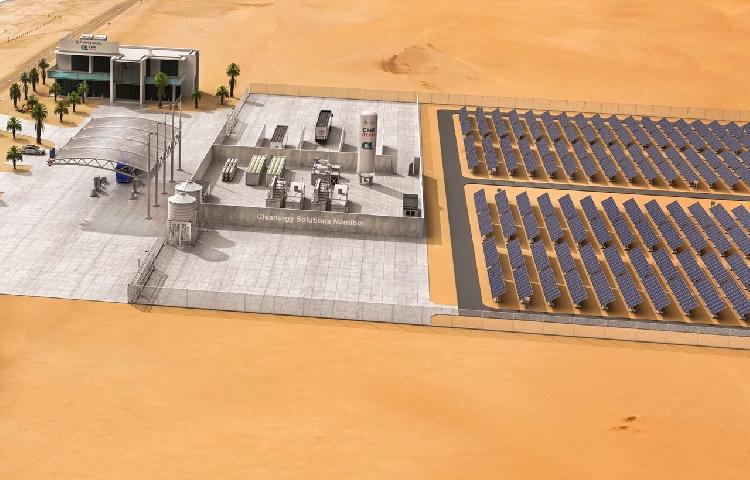Africa-Press – Namibia. CLEANERGY Solutions Namibia has announced plans to construct a power supply line for its green hydrogen pilot project in the Walvis Bay area.
Cleanergy is a joint venture between Ohlthaver & List (O&L) and CMB.TECH, a subsidiary of Belgian company Compagnie Maritime Belge, mainly aimed at constructing a green hydrogen pilot/demonstration plant, refuelling station and training centre.
The planned grid connection, limited to about 200 kVA, would only serve as back-up for nighttime safety systems and controllers at the pilot plant and not for hydrogen production.
According to O&L, Cleanergy’s parent company, hydrogen produced from the project will be generated solely using renewable energy (solar).
The proposed power line will run from the Cleanergy site east of Dune 7 on Farm 58, in a southerly direction. It will cross the existing C14 Road and connect with the existing 11kV T-off and Erongored power line.
The route will follow the new highway and 132kV transmission line corridor, an existing NamWater pipeline route, and an existing Erongored line, which will be upgraded and replaced.
Cleanergy intends to use either the Horizontal Line Post Compact Delta or A-Frame Structure for the power line. The final decision on which structure to use will be made during the detailed design stage.
The construction period for this power line is estimated to be approximately one month, with commencement planned for the third quarter of 2023, or as soon as the environmental clearance certificate (ECC) has been granted.
According to a document by Elizabeth van Zyl from Enviro Dynamics, the project requires the installation of an 11kV power line.
As such, the proposed power line must first undergo an environmental impact assessment and obtain an ECC.
The public is, therefore, invited to the environmental assessment process by providing any comments or concerns.
Eike Krafft, Cleanergy Development Committee Member said the green hydrogen pilot plant announced last year will consist of a 5 MW photovoltaic energy system and will produce green hydrogen using a 5 MW proton exchange membrane electrolyser.
“The green hydrogen produced will be used for local applications in the port, transport and/or mining sectors, including heavy-duty equipment to operate on dual fuel combustion technology,” said Krafft.
For More News And Analysis About Namibia Follow Africa-Press






